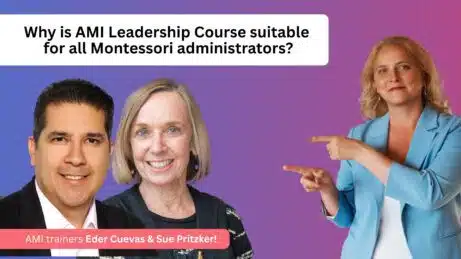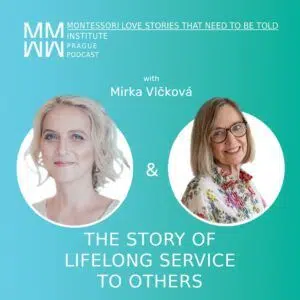My Vision: Montessori as a Global Learning Organization

I’ve been working in Montessori for 15 years. I’ve started by organizing “Mommy and Me” Montessori classes. I founded and developed a fully authentic AMI Montessori school for children 15 months to 15 years old. I have started and grown a successful AMI training center in Prague.
I’ve been observing the global Montessori movement for all these years, facing many challenges, asking myself many questions.
Now, I’ve reached a conclusion: Our global Montessori movement stands at a crossroad.
Montessori education has independently thrived in various corners of the world. We often proudly share that interest in Montessori has been growing, citing the demand for Montessori guides, new training and Montessori enthusiasts globally.
At the same time, when we look closely and speak with people in schools, classrooms, training centers and associations – you can often see disconnection, fragmentation, exhaustion and overwhelm. Many Montessorians, including teachers, school administrators, and trainers, are stressed to the point of burnout. They’re struggling to keep going, often at the expense of their health and family life.
Behind this struggle, however, there is also a lot of enthusiasm, love for the child and love for Montessori education, helping children and communities worldwide.
Here I am, looking at the two sides of one coin, seeing hope on one side and despair on the other, wondering what can be done.
Every day at work, I see a pressing need for systemic thinking and collaboration which would help us tackle this exhaustion and disconnection. I’ve come to a point in my life where things have come full circle.
We, the global Montessori movement, need to transform into a learning organization.
Inspired by Peter Senge’s model, I am committed to advocating for Montessori organizations to unite as a single, learning entity. We need to share knowledge and experience to improve our collective effectiveness.
It’s disheartening to see each new school, training center, and association repeatedly reinvent the wheel, making the same mistakes many of us have already encountered. If we could capture and share all our learning experiences, imagine how much easier it would be to do our wonderful work every day.
We need the big picture approach. We need to see ourselves as an interconnected whole, recognizing patterns, sharing successes, and collectively addressing challenges.
Peter Senge’s concept, as detailed in “The Fifth Discipline,” emphasizes collective adaptation and growth. For Montessori organizations, this means moving beyond individual school development to embrace a movement-wide growth mindset. This involves connecting regularly, communicating in a structured way, cultivating a shared vision and engaging in community learning.
I am embarking on a journey to do my share in connecting Montessori organizations worldwide.
The transformation of our movement into a global learning organization hinges on connectivity. Bringing Montessori to all children of the world cannot be done by one organization or one person. We have to do it together. And to do it together, we have to talk, we need to establish a network for sharing best practices, innovations, and learning resources. We need to stop duplicating efforts and start practicing collective problem-solving to speed the spread of the Montessori method.
In 2024, my team at Montessori Institute Prague and I will focus on creating a community that functions as a learning organization. Yesterday, we started our collaborative and learning program with a group of over 50 people from organizations all over the world. We are also planning more such initiatives to come later this year.
It’s time to think bigger (and collaboratively). Only through structured, continual community engagement led by committed “community architects”, can we bring Montessori to children and communities worldwide. This is a call to action for you all to join us on this transformative journey.
Are you in?
With love and care,
Mirka




